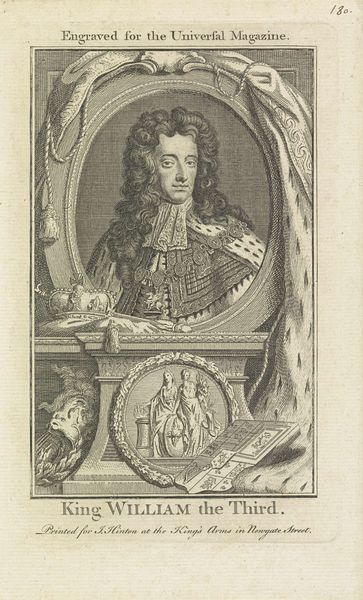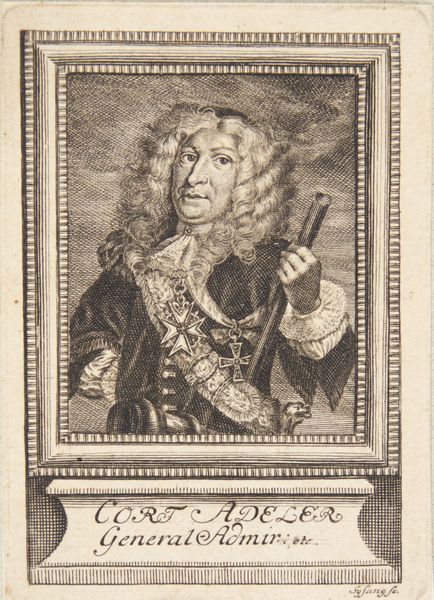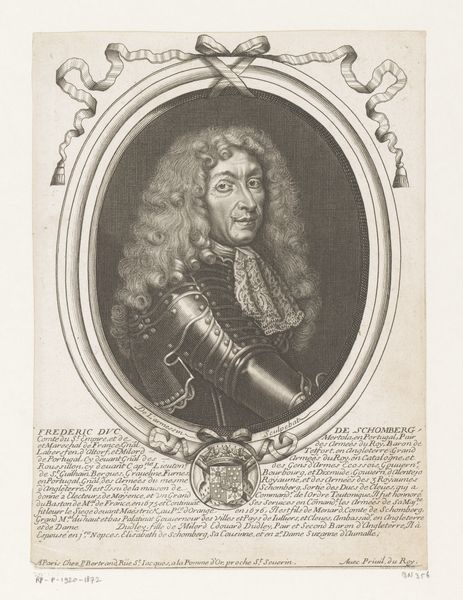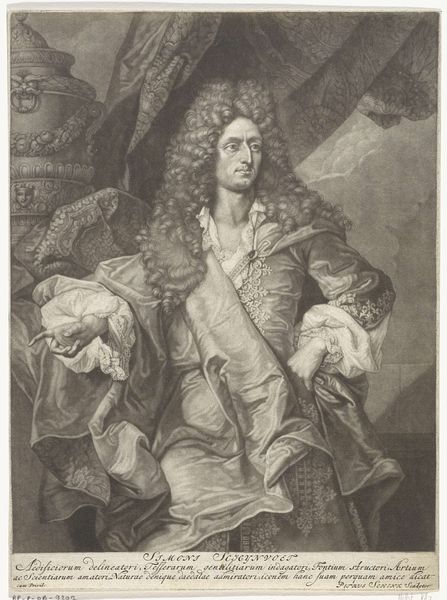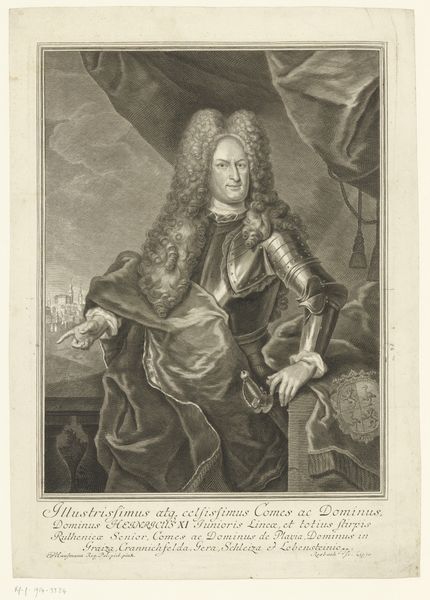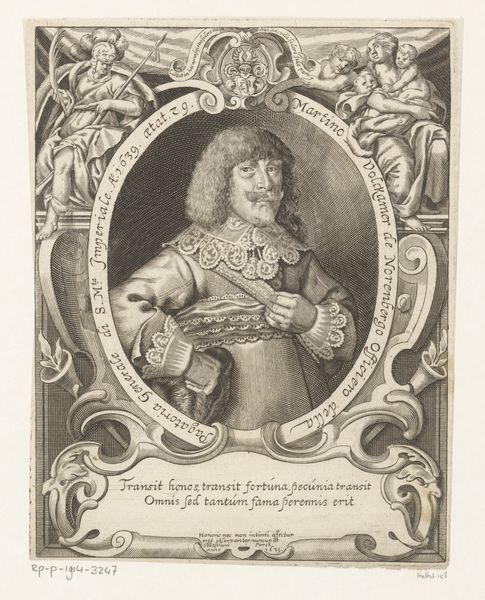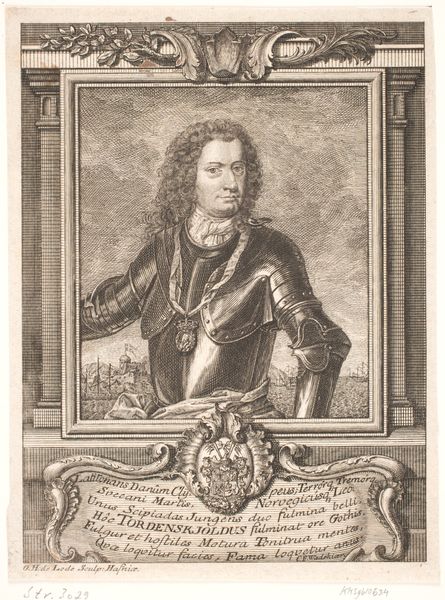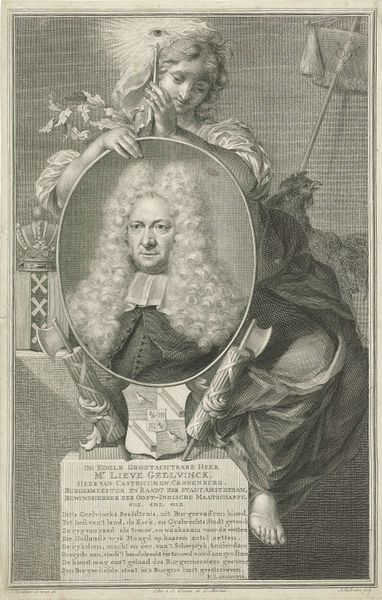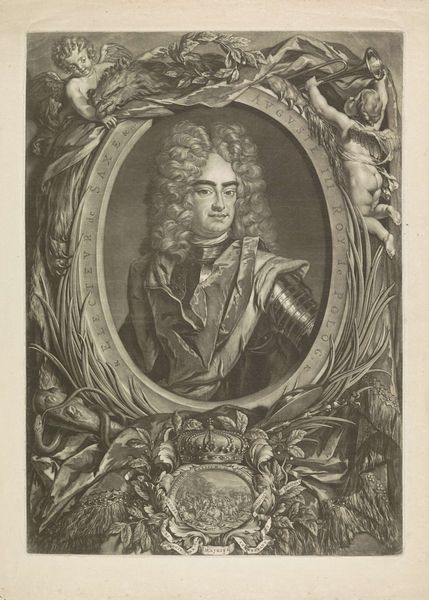
engraving
#
portrait
#
baroque
#
dutch-golden-age
#
old engraving style
#
geometric
#
line
#
history-painting
#
engraving
Dimensions: height 351 mm, width 292 mm
Copyright: Rijks Museum: Open Domain
Editor: Here we have Romeyn de Hooghe's "Portret van Carl von Rabenhaupt," an engraving from 1673. I’m immediately struck by the level of detail achieved with just lines. What do you make of it? Curator: This engraving offers a rich case study in the material conditions of 17th-century Dutch printmaking and its role in shaping historical narratives. Consider the labor involved in producing this image: the engraver, the printer, the paper maker, all contributing to a reproducible image that circulated widely. How does understanding the means of production shift your understanding of its meaning? Editor: That's interesting. I guess I hadn't really considered the labour involved so much as seeing the artwork itself, but I can see how that is important to contextualise this. So, considering the work, do you think the choice of engraving as a medium influences the reception of the portrait? Curator: Absolutely. Engraving allowed for the dissemination of this image to a wider audience, effectively mass-producing an idealised representation of Rabenhaupt. Furthermore, the geometric style allowed precision, enhancing the authoritative message of power. Consider this in relation to the social standing of the subject; who could afford such representation and what purpose does the reproduction of these artworks do? Editor: It makes sense that the medium helped with the subject's image, both for spreading his image widely, and helping to solidify his power by presenting an authoritative image through the fine geometric details afforded by the medium. Curator: Precisely! And don't overlook the socio-political context, either; engravings like this often served propagandistic purposes during a period marked by both expansion and war. Considering what has been said, are there any other observations to add to your initial reaction? Editor: Considering that you say it likely had propaganda elements at a time of expansion and war, that helps clarify how the materials influenced and were chosen to deliver certain messages in art. Curator: Indeed. Reflecting on the materials, labor, and social conditions involved gives us a more complete picture than just seeing it as a face on paper.
Comments
No comments
Be the first to comment and join the conversation on the ultimate creative platform.

